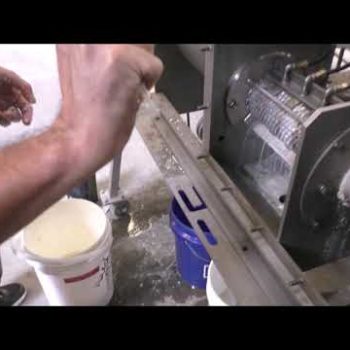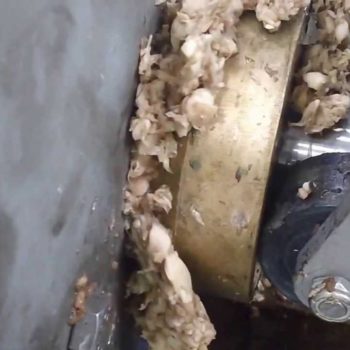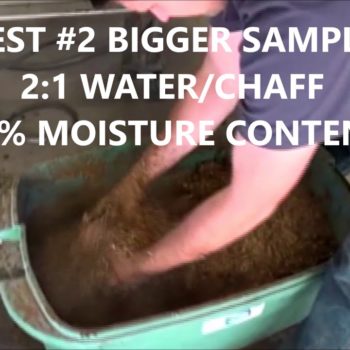May 18, 2012
As detailed in the 2002 Pressing News #135, Vincent Corporation did their first work on waste from sweet cone canneries in 2001. The large Series KP presses were introduced as replacements for the traditional baling machines. The use of the screw presses has since proven to result in better dewatering of cob and husk, while providing more reliable performance and lower maintenance costs.
It is important to note that the moisture reduction objective in all of these installations is limited and realistic. The silage going into the press has a moisture content which can range a lot, typically 80% to 84%. The cake produced generally has 75% to 80% moisture. The objective is only to remove free water. This prevents dripping on the highway when the material is transported, and it eliminates a stream of water previously seen running from the pile when it is unloaded at a farm. We field many inquiries from parties seeking a miracle press which will reduce the moisture content to 65% or some such other impractical number.
During the 2008 harvest advances were made by using the twin screw press. The objective of the tests was to replace not only the baler, but also the shredder. Besides being extremely noisy, the shredders are so maintenance prone that most canneries mount them on wheeled carts. This allows them to be removed from service and by-passed when necessary.
It was hoped that a horsepower reduction would result. Most shredders use 100 hp motors, and presses normally use much smaller drives. However it was found that when the shredding task is added to the pressing task, the motor of the screw press ended up being as large as that of the shredder being replaced.
Distinct advantages did result from the use of the twin screw presses. Compared to a single screw press, the degree of shredding showed noticeable improvement, as did the amount of dewatering. This means that the waste is made into a more desirable animal feed. From the farmers’ standpoint, corn silage goes from being a cheap waste to a favorably viewed product.
An Allens cannery in Bergen, New York uses a twin screw press. This TSP-16 unit handles 50 tons per hour of waste. It is fitted with a 150 hp drive.
Another twin screw press, a Model TSP-12, is in service at Barfoot Energy in England. This press is used with a biogas digester which produces methane from corn waste. The system was engineered by MT Energie of Germany.
Another interesting installation was at Birds Eye in Waseca, Minnesota. They used a pair of single screw VP-22 presses, without benefit of a shredder. This was an unusual installation because the presses, which ran at an extremely high 70 rpm, were driven by hydraulic motors instead of the conventional electric drives.
The Waseca plant out-grew the VP-22’s and is installing a pair of KP-30’s for the 2012 season. The choice was made because, at this point, Minnesota KP-30 installations at Lakeside Food plants in Plainview and Owatonna, and Del Monte in Sleepy Eye, have been running successfully for seven to ten years. These each handle 75 to 85 tons per hour of silage.
The KP-24 has done equally well, in Idaho at Bybee Foods and National Frozen Foods, as well as the Lakeside Foods plant in Brooten, Minnesota and Allens in Fairview, Wisconsin. These handle 40 to 50 tons per hour of silage.



